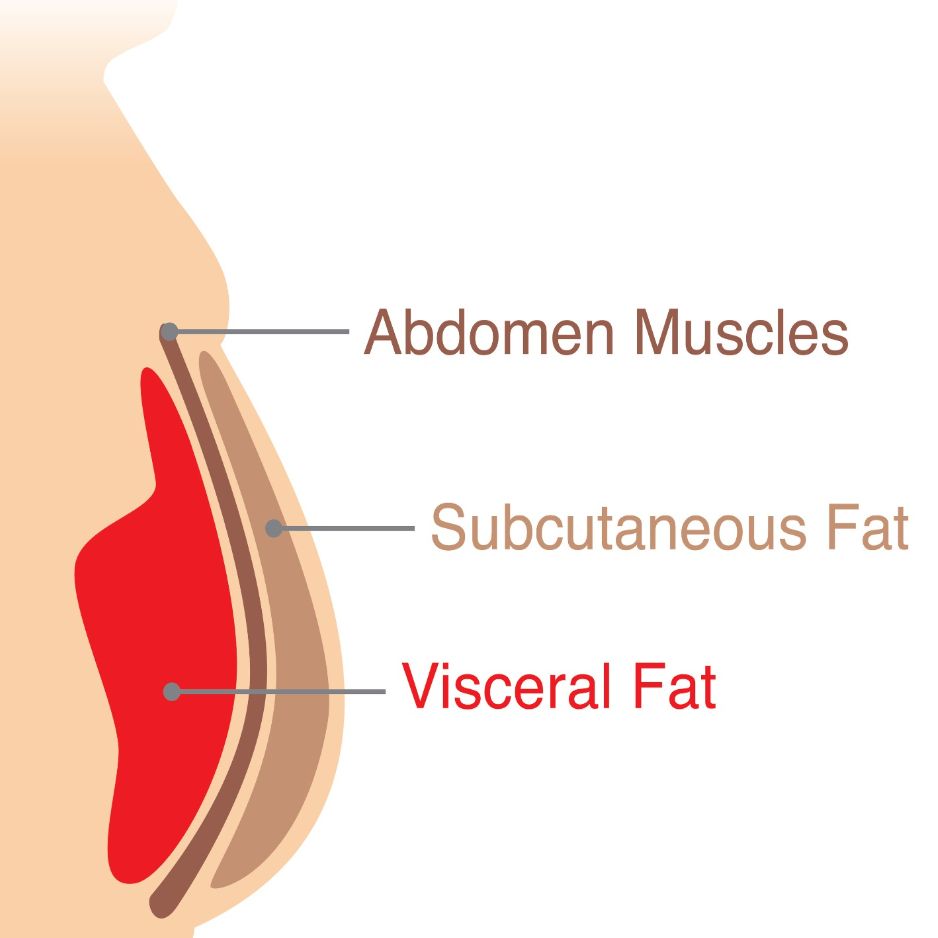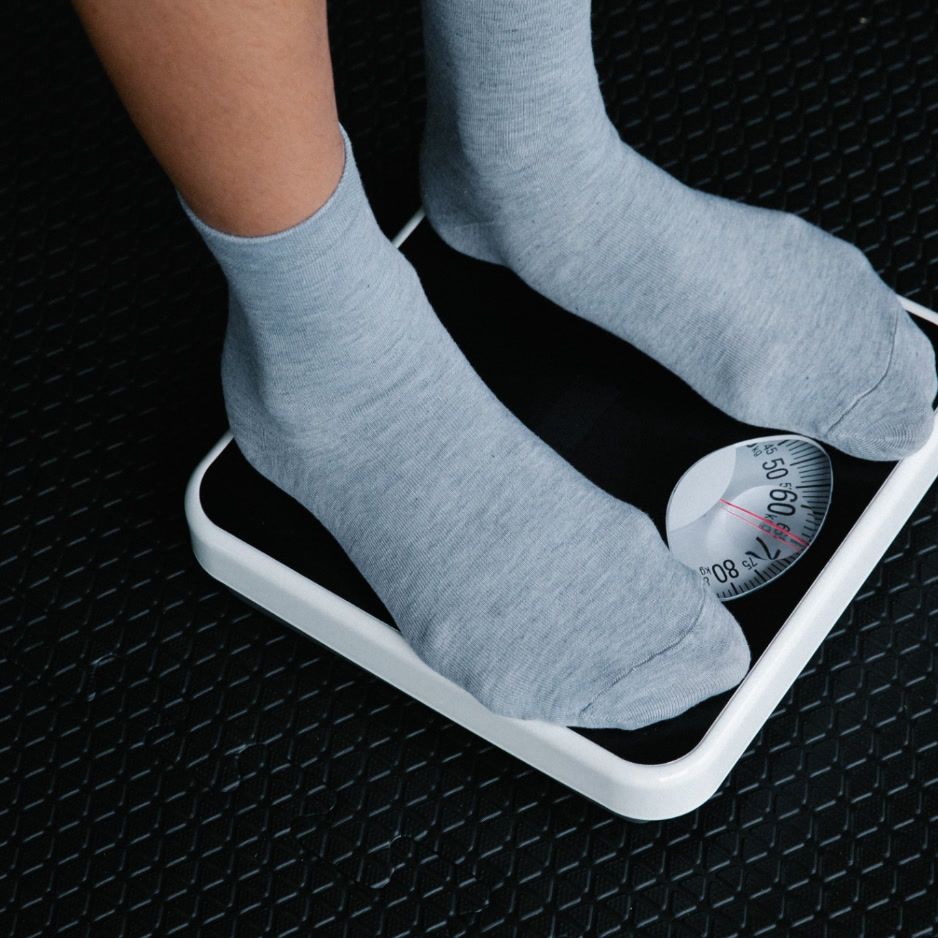How to Prevent Diabetes: A Science-Backed Plan

How to Prevent Diabetes: A Science-Backed Action Plan
Disclaimer: This content is for educational purposes only and is not a substitute for professional medical advice.
Preventing type 2 diabetes isn’t about one magic food or a punishing workout. It’s about dialing in a handful of lifestyle habits that landmark studies show can dramatically slash your risk—no crash diets or marathon training required.
In this guide we’ll break down:
- The key risk factors you can and can’t change
- Nutrition strategies (beyond “eat less sugar”) that keep blood glucose in check
- Exercise blueprints for every schedule — including 5-minute desk workouts
- Critical habits like sleep, stress management, and hydration
- Using DEXA scans to track changes in risky body fat
Why Diabetes Prevention Matters Now
Type 2 diabetes affects more than 38 million Americans, and another 96 million are living with prediabetes (CDC FastStats). Once diagnosed, the condition is costly—financially and physiologically. But decades of evidence show that simple lifestyle tweaks delay or even prevent progression from prediabetes to full-blown diabetes.
Unsure if you’re already in the "prediabetes" zone? Check out our guide to the early symptoms and testing options.
The 58 Percent Stat—in Plain English
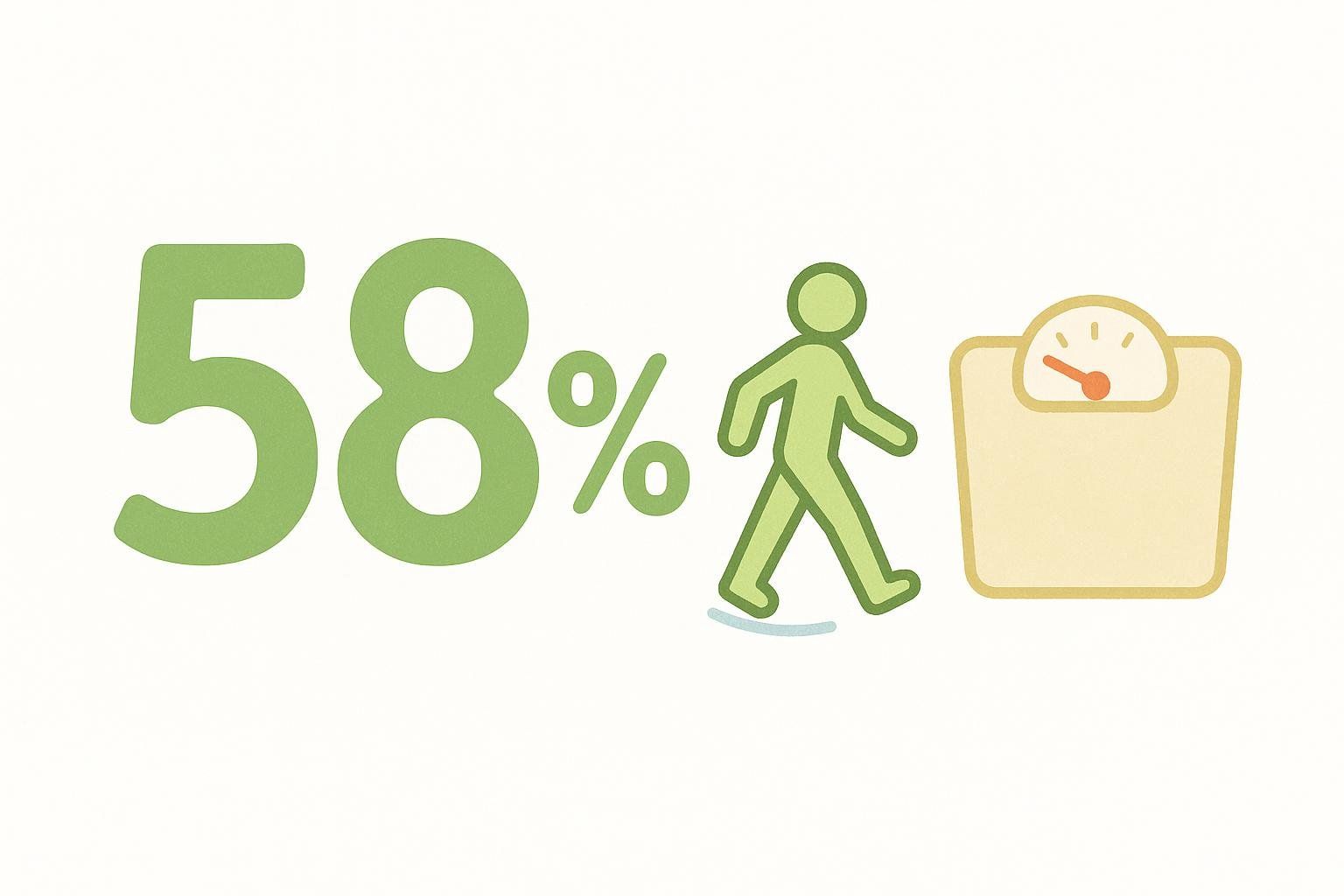
The landmark Diabetes Prevention Program (DPP) followed 3,234 adults with prediabetes for three years; participants who lost 5–7 percent of their body weight and logged 150 minutes of activity per week reduced their risk of developing type 2 diabetes by 58 percent (and by 71 percent if they were over age 60) (DPP Outcomes Study).
Know Your Modifiable Risk Factors
| Risk Factor | Why It Matters | How to Measure |
|---|---|---|
| Excess body fat (especially visceral) | Fat stored around organs drives insulin resistance. | DEXA visceral-fat score; waist circumference. See our visceral fat percentile charts. |
| Sedentary lifestyle | Inactivity reduces muscle glucose uptake. | Step count, exercise minutes |
| Poor diet quality | Refined carbs and saturated fat impair insulin sensitivity. | Food log, lipid panel |
| Sleep debt (<7 h/night) | Short sleep increases cortisol and appetite-regulating hormones. | Sleep tracker, diary |
| Chronic stress | Elevates cortisol and blood glucose. | Perceived Stress Scale |
| Smoking | Raises inflammation and abdominal fat. | Self-report |
You can’t change genetics or age, but you can offset them by optimizing the levers above.
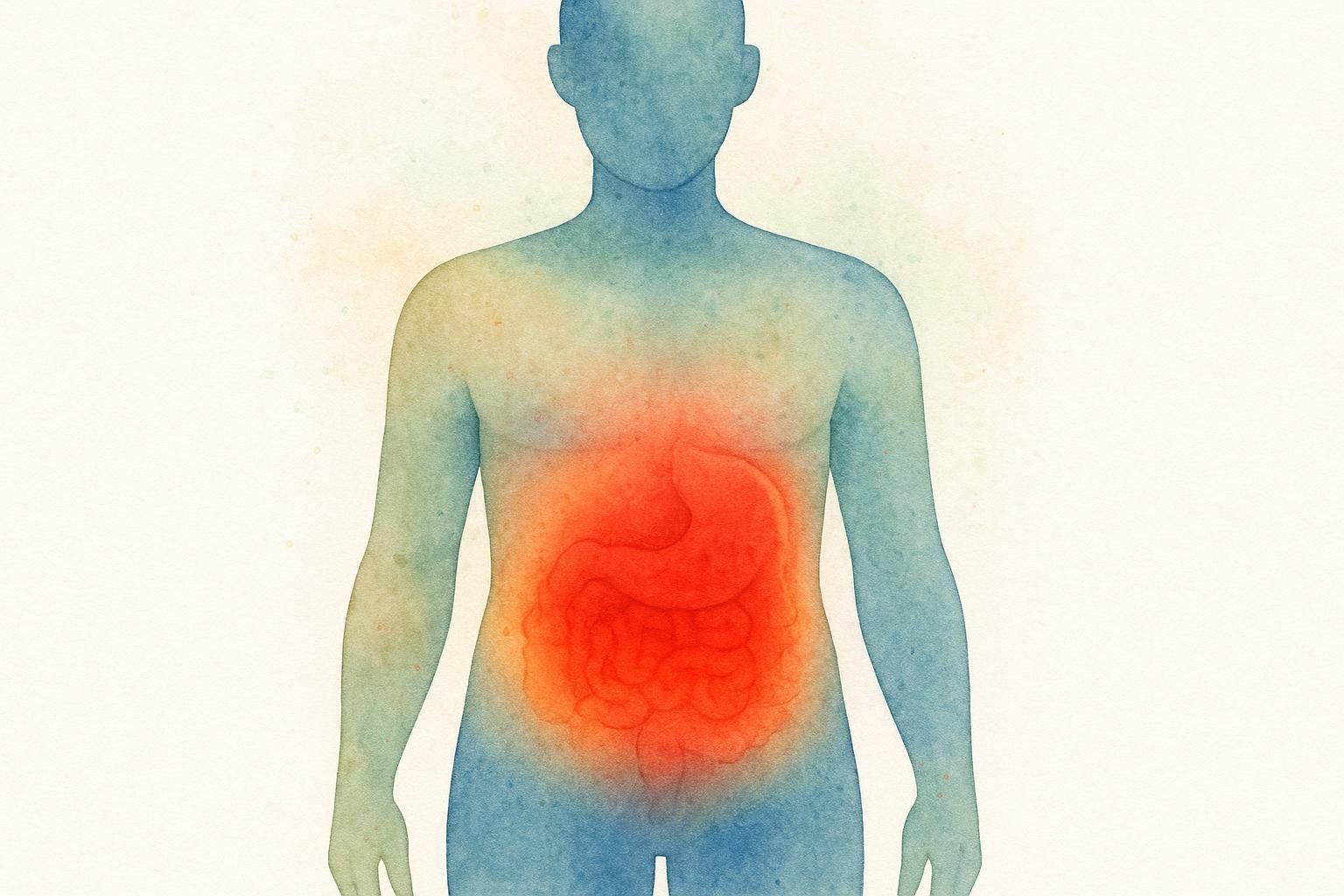
Nutrition Strategies for Blood Sugar Control
1. Aim for a 50-25-25 Plate
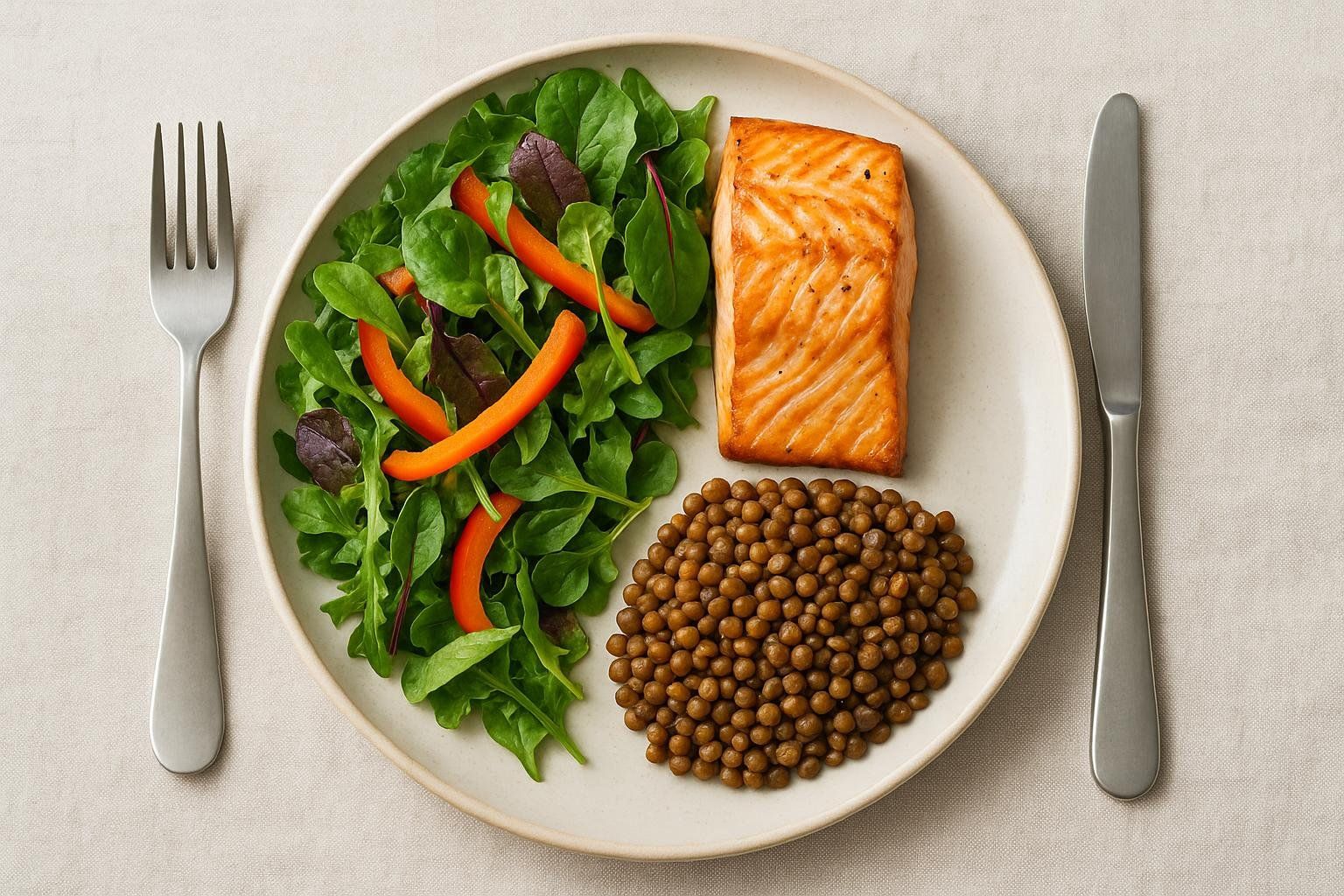
- 50 % non-starchy vegetables (fiber slows glucose release)
- 25 % lean protein (supports muscle and satiety)
- 25 % low-GI carbohydrates like quinoa, lentils, or sweet potato
Long-term cohort data show that people who follow lower-glycemic-index eating patterns have a 20–30 % lower risk of developing type 2 diabetes, whereas every 10-unit bump in dietary GI raises risk by 27 % (2019 meta-analysis of prospective studies).
2. Prioritize Mediterranean-Style Fats

Monounsaturated fats from olive oil, nuts, and avocado improve insulin sensitivity. Swap butter for extra-virgin olive oil and choose fatty fish twice a week for omega-3s.
3. Time Carbs Around Activity
Muscle contractions create a GLUT-4 pathway that shuttles glucose out of the bloodstream. Consuming higher-carb meals within about two hours after exercise can improve post-meal glycemia (Cleveland Clinic guidance).
4. Eat Fiber and Protein Before Carbohydrates
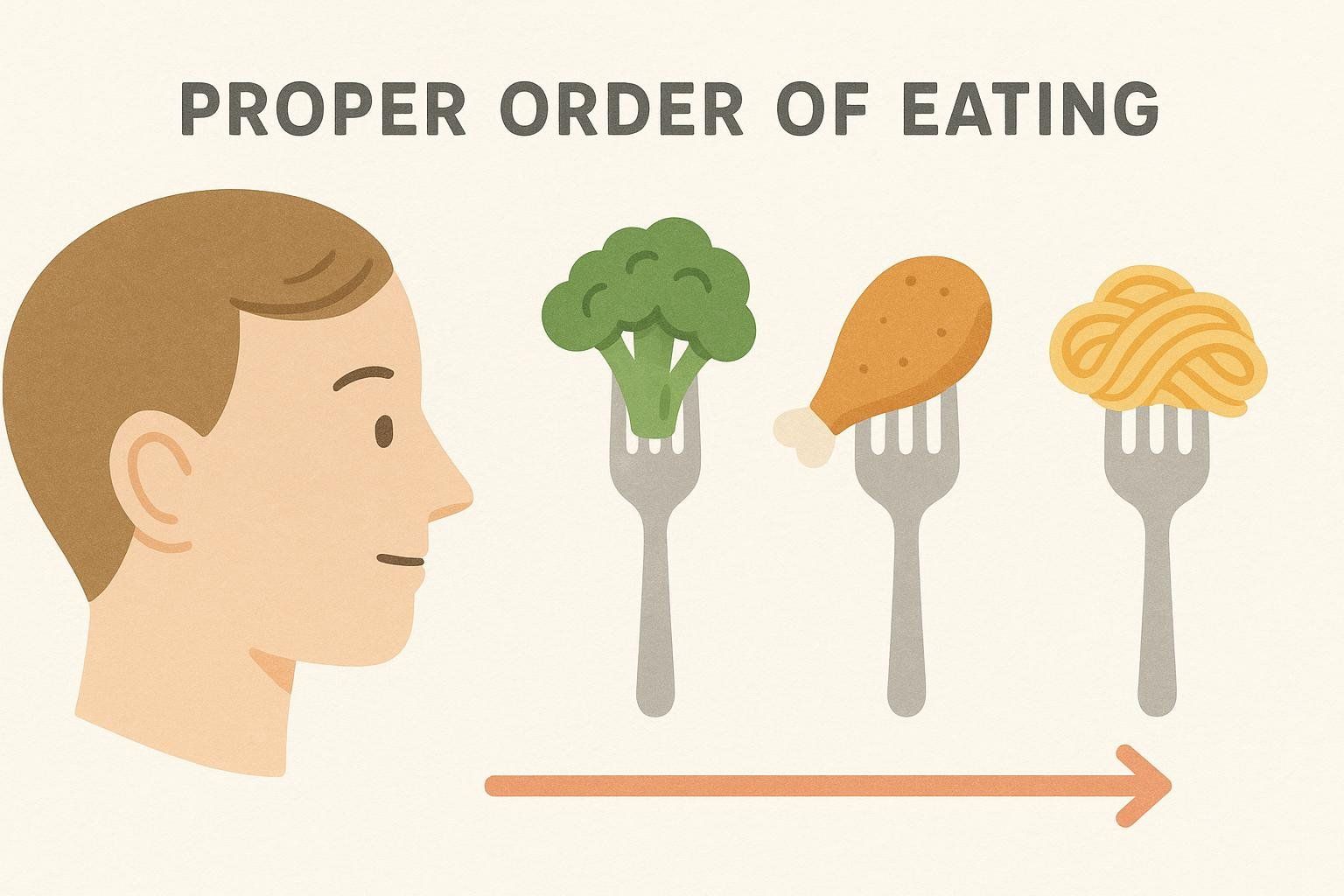
According to a 2015 Diabetes Care study, eating protein and vegetables before carbs can cut post-meal glucose peaks by ≈30–40 percent (view study).
5. Maintain Proper Hydration
The National Academy of Medicine recommends about 3.7 L (≈125 oz) daily for men and 2.7 L (≈91 oz) for women, including fluids from food and beverages (Mayo Clinic hydration overview). Adjust upward if you exercise or live in a hot climate.
Related Article: Need meal ideas? Browse our 30 healthy meal-prep recipes.
Move More—Even If You Sit All Day
Weekly Exercise Blueprint

| Goal | Minimum Dose | Upgrade Path |
|---|---|---|
| Cardio | 150 min/wk of moderate pace (e.g., brisk walking) | 75 min of vigorous HIIT or cycling |
| Strength | 2 total-body sessions/wk | 3–4 sessions with progressive overload |
| NEAT (daily movement) | 7,000–8,000 steps/day | 10,000+ steps |
Stepping up pays off: among older adults, every additional 1,000 steps/day is linked to a 6 percent lower risk of developing diabetes (2022 Diabetes Care cohort study).
5-Minute Desk Routine (Repeat 3 × day)
- 20 body-weight squats
- 15 countertop push-ups
- 30-second plank
- 20 walking lunges (in place is fine)
- 60-second brisk stair climb or march in place
Related Article: Master the four essential exercise types for balanced fitness.
Key Lifestyle Factors Beyond Diet and Exercise
Sleep 7–9 Hours

Both short (<6 h) and long (>9 h) sleep durations are linked to higher diabetes risk, with the lowest risk around seven to eight hours (2015 sleep-diabetes meta-analysis).
Stress Management for Blood Sugar Control

Chronic cortisol secretion promotes visceral fat storage and insulin resistance. Evidence-based tools:
- Box breathing: 4-4-4-4 seconds in-hold-out-hold
- Walking breaks: 10 minutes post-lunch reduce cortisol and glucose
- Mindfulness practices can trim HbA1c by ≈0.3 percentage points, according to a 2023 systematic review of mindfulness and glycemic outcomes (read review).
Cut (or Quit) Smoking
Smokers have a 30–40 percent higher risk of diabetes (CDC smoking & diabetes fact sheet). The upside: risk begins dropping within months of quitting.
Limit Alcohol to Moderate Levels
Heavy drinking (>3 drinks/day) raises diabetes risk by ≈40–50 percent, while light-to-moderate intake has a neutral or slightly protective effect (2022 Diabetes Care analysis).
Track Your Progress with Data, Not Guesswork
Body Composition & Visceral-Fat Scans

Your bathroom scale can’t tell you where you’re losing weight. A DEXA scan reveals:
- Total fat mass vs. lean mass changes
- Visceral-fat volume (the dangerous stuff)
- Regional fat loss—so you know if belly fat is actually shrinking
This precise data confirms that your plan is reducing harmful visceral fat, not just overall weight.
Related Article: How to interpret your DEXA results like a pro.
Blood Biomarkers
Ask your healthcare provider about:
- Fasting glucose — normal is <100 mg/dL
- HbA1c — normal is <5.7 %
(Both metrics: ADA Standards of Care)
- Fasting insulin — a typical reference range is 5–20 µIU/mL; values toward the lower end of this range typically indicate better insulin sensitivity (MedlinePlus overview)
- Lipid panel — triglycerides <150 mg/dL and HDL ≥40 mg/dL (men) or ≥50 mg/dL (women) (CDC cholesterol guidelines)
For a deeper dive into common lab tests, see our complete health screening guide.
Wearable Glucose Sensors (Optional)
Continuous glucose monitors (CGMs) worn for two weeks can spotlight hidden food triggers and verify that your exercise routine is working.
The Bottom Line
Learning how to prevent diabetes is absolutely achievable with small, consistent shifts in diet, movement, sleep, and stress management. Track your progress, adjust as needed, and celebrate the wins along the way.
Ready to see your own body’s data? Book a BodySpec DEXA scan today to pinpoint exactly where you stand and track your progress with medical-grade accuracy.
